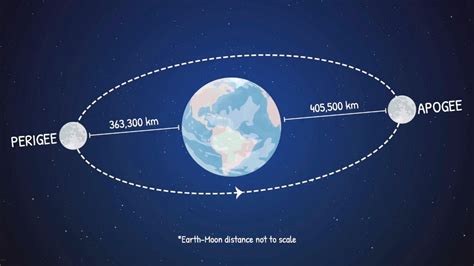How Far is the Moon From Earth? A Comprehensive Guide
The distance between the Earth and the Moon isn't a fixed number. Because the Moon's orbit isn't a perfect circle, the distance varies throughout its monthly journey. Understanding this variation is key to appreciating the complexities of our celestial neighbor.
Understanding the Moon's Orbit
The Moon's orbit around the Earth is elliptical, meaning it's oval-shaped, not circular. This elliptical shape is why the distance fluctuates. At its closest point, called perigee, the Moon is approximately 225,623 miles (363,104 kilometers) away. At its farthest point, known as apogee, the distance stretches to around 252,088 miles (405,696 kilometers).
Key Terms to Know:
- Perigee: The point in the Moon's orbit where it's closest to Earth.
- Apogee: The point in the Moon's orbit where it's farthest from Earth.
- Average Distance: While the distance varies, a commonly used average distance is approximately 238,855 miles (384,400 kilometers).
Why the Distance Matters
The varying distance between the Earth and the Moon impacts several phenomena:
- Tidal Forces: The Moon's gravitational pull is strongest when it's closest to Earth (perigee), resulting in stronger tides.
- Lunar Eclipses: The distance affects the apparent size of the Moon during lunar eclipses, influencing the eclipse's duration and appearance.
- Space Missions: Accurate distance calculations are critical for planning and executing successful space missions to the Moon.
Calculating the Distance
While we can use the average distance as a general figure, more precise measurements are crucial for scientific applications. Scientists use a variety of methods to determine the exact distance at any given time, including:
- Laser Ranging: Reflectors left on the Moon by Apollo astronauts allow scientists to bounce laser beams off the lunar surface and precisely measure the distance.
- Tracking Satellites: Observing the movement of satellites orbiting the Moon provides another way to calculate the distance.
The Moon's Influence on Earth
The Moon's proximity and its gravitational pull play a significant role in shaping life on Earth. Beyond tides, its influence extends to:
- Earth's Axial Tilt: The Moon stabilizes Earth's axial tilt, contributing to a relatively stable climate over long periods.
- Ocean Currents: The Moon's gravity subtly affects ocean currents, influencing global weather patterns.
Conclusion: More Than Just a Number
The distance between the Earth and the Moon is far more than just a numerical value. It's a dynamic relationship crucial for understanding the forces shaping our planet and our celestial neighbor. By understanding this ever-changing distance, we gain a deeper appreciation of the intricate dance between Earth and its Moon.
